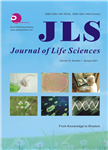Interaction Between Heficoverpa zea Damage with Corncob Diseases on Genetically Modified Corn in Sinaloa, México
Interaction Between Heficoverpa zea Damage with Corncob Diseases on Genetically Modified Corn in Sinaloa, México作者机构:Plant Health Department Universidad A utónoma Agraria Antonio Narro Buenavista Saltillo 25315 Coahuila México
出 版 物:《Journal of Life Sciences》 (生命科学(英文版))
年 卷 期:2014年第8卷第4期
页 面:329-334页
主 题:Bacillus thuringiensis transgenic Fusarium Ustilago maydis mycotoxins corn smut.
摘 要:GM (genetically modified) corn with the CrylAb, mCry3A and Vip3Aa20 protein of Bt (Bacillus thuringiensis) and its respective isoline as control with and without chemical control for corn earworm were used in this research. Fusarium corncob damage was lower on GM corn with (12.5%) and without (25.7%) insecticide treatment as compared with the isoline that had 48.3% and 83.1% of damaged corncobs with and without chemical control, respectively. Corn smut cob damage was also lower on GM corn with (3.2%) and without (6.3%) insect control compared with 15.5% and 49.7% damage with and without insecticide treatment, respectively. Fusarium sp. corncob rot was also lower on GM corn with 5.7% and 9.5% whereas a 24.6% and 63% rot was observed on the isoline with and without insecticide control, respectively. Ustilago maydis severity was also lower on Bt corn finding 0.07% and 0.25% damage on treatments with and without insect control as compared with the isoline that showed an 11.6% and a 41.4% smut rot with and without insecticide treatment, respectively. The authors conclude that GM corn resistant to Helicoverpa zea prevents damage by the pest, eliminating the entrance pathway for Fusarium sp. and Ustilago maydis.



